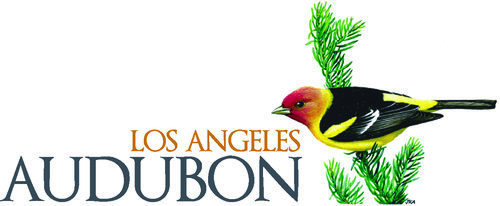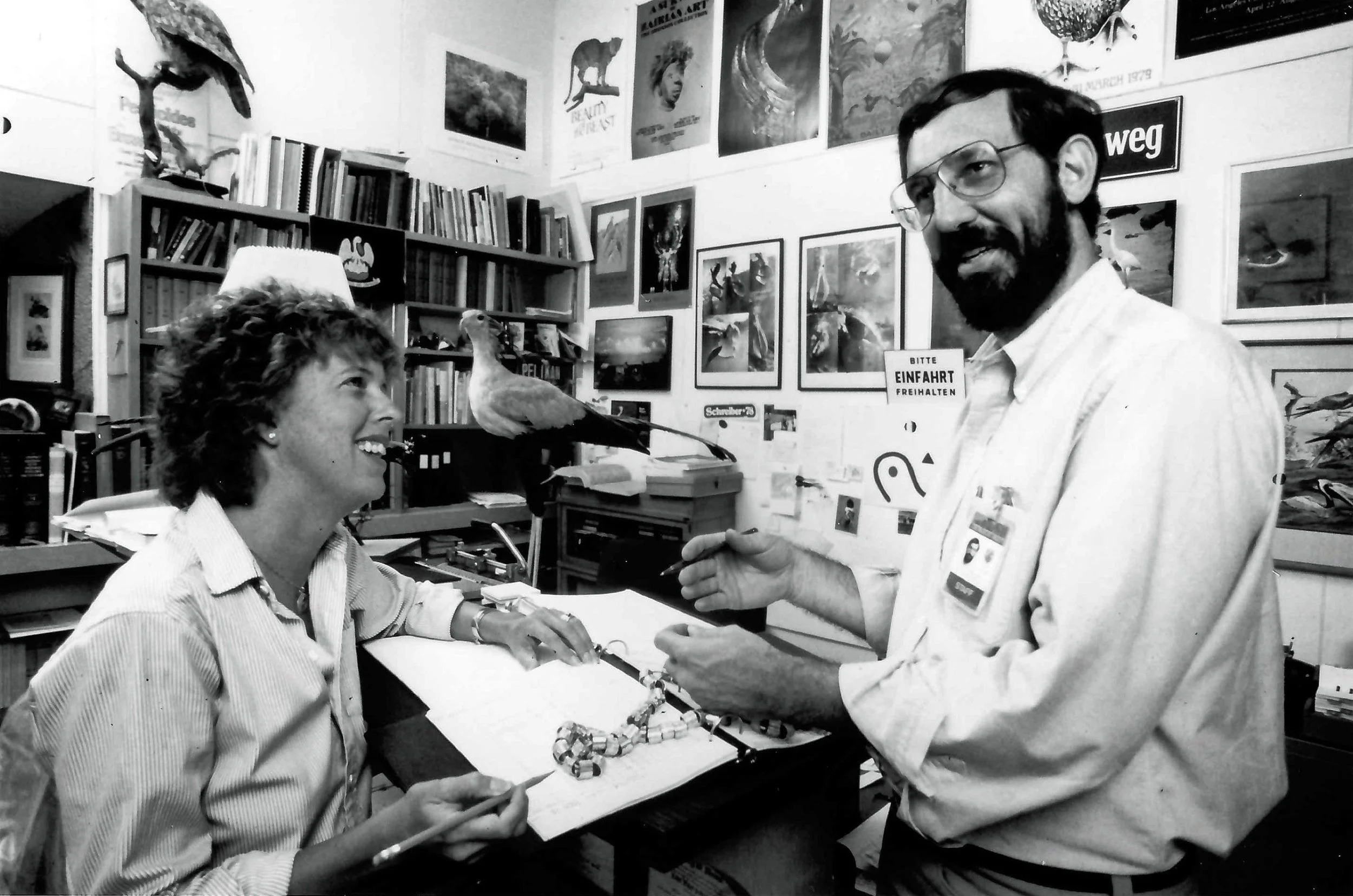There’s no doubt that fall migration is a great time for birders. “Southbound migration” might be a better term, given that the passage takes place from June through November. Even that isn’t exact, as not all migrants are headed south. Tropical Kingbirds are an obvious example of a species whose movements are to the north and west.
Birds of the Season — August 2019
Though late June and early July tend to be a slower time of year compared to the major rush of spring migration and the great variety that autumn provides, there were nonetheless a number of notable birds recorded in the county. As July progressed into August, plenty of southbound shorebirds and a handful of passerines were already passing through.
Birds of the Season — June 2019
March and April in southern California encompass a great deal of change in the avian world. Passerine migration transforms from a trickle to a flood, wintering birds are leaving on their various schedules and breeding activity is pervasive.
From the first early arriving passerines to the waves of birds encountered in April and May, spring migration is a remarkable event to witness. While the quality and quantity of birds can vary from day to day—often due to factors we’ve yet to understand—this is a fantastic time to take to the field.
Shorebirds can briefly be seen in their breeding colors. Loons and scoters are streaming northward along the coast. The weather is generally pleasant and the landscape is lush. It could well be argued that this time of year offers more for birders than any other.
As usual, given the diversity of habitats in Los Angeles County, the variety of birds present in March and April was substantial. Wintering vagrants gradually began to disappear as spring progressed, and there were a few new discoveries to keep things interesting. Typically for this time of year, reports of new vagrants were comparatively scarce.
Birds of the Season — April 2019
March and April in southern California encompass a great deal of change in the avian world. Passerine migration transforms from a trickle to a flood, wintering birds are leaving on their various schedules and breeding activity is pervasive.
From the first early arriving passerines to the waves of birds encountered in April and May, spring migration is a remarkable event to witness. While the quality and quantity of birds can vary from day to day—often due to factors we’ve yet to understand—this is a fantastic time to take to the field.
Shorebirds can briefly be seen in their breeding colors. Loons and scoters are streaming northward along the coast. The weather is generally pleasant and the landscape is lush. It could well be argued that this time of year offers more for birders than any other.
As usual, given the diversity of habitats in Los Angeles County, the variety of birds present in March and April was substantial. Wintering vagrants gradually began to disappear as spring progressed, and there were a few new discoveries to keep things interesting. Typically for this time of year, reports of new vagrants were comparatively scarce.
Birds of the Season - February 2019
December through February is that slow time of the bird year when nothing much of interest turns up, right? In some years that statement may ring true, but it was hardly accurate this winter. Some truly unexpected birds were found along with many lesser vagrants. As usual plenty of continuing rarities were regularly reported at their respective locations.
Western Tanager, Vol. 83 No. 6, Jul–Aug 2017
ON THE COVER
‘I’iwi | Hakalau Forest Wildlife Refuge, Photo by Jack Jeffrey
Found nowhere else in the world, the spectacular scarlet‐feathered I’iwi (Drepanis coccinea) is the last of the sickle‐billed Hawaiian honeycreepers. Before the appearance of humans in Hawaii, more than fifty different honeycreeper species were known to have existed. Today, only 18 species remain, most of these are endangered or threatened. I’iwi feathers were once collected by early Hawaiian bird catchers or “kia manu”, and used for the feathered cloaks of Hawaiian Royalty. I’iwi are still fairly abundant in the remaining high elevation native koa‐ohia forests of Hawaii Island and Maui, but rare on the other major islands. The long down‐curved bill of the I’iwi is a perfect match for the shape of tubular flowers of many native plants, making I’iwi important pollinators of these and other native plants. To see an I’iwi, or to hear its loud “rusty hinge” call is an extraordinary experience and one that can only be had in a Hawaiian rainforest.
In this issue
• YOUNG BIRDERS: Birds of the Hakalau Forest on the Big Island of Hawai’i, By Dessi Sieburth
• INTERPRETING NATURE: Does nature have a place in the English Language Arts classroom?, By Robert Jeffers, L.A. Audubon Treasurer | Instructional Coach
• Princeton Phainopepla Project, Please send your sightings to Dr. Daniel Baldassarre, Princeton University
• Birds of the Season—June 2017, By Jon Fisher
• OPINION: Every Creature on Earth is Under Threat, By Louis Tucker, LAAS Member and Field Trip Leader
• A Tribute to Judy Raskin, By Brad Rumble, LAAS Director at Large
Western Tanager, Vol. 83 No. 5, May–June 2017
On The Cover: Brown-eyed Primrose | Photo by Read Howarth
About the Photographer: Read Howarth is a disability insurance broker who lives in Los Angeles County. He moved here in 2009 from New Jersey. His then moderate lifelong interest in birding was given a jolt with his observation of a Surf Scoter in Marina Del Rey, while sailing. His first Audubon Field Trip was three years ago, on a Kurt Leuschner led trip to Anza-Borrego. It was to become the first of many Audubon walks and field trips since. Birding, sailing and volunteering as a Docent in Topanga State Park keep him out in nature and provide springboards for more educational opportunities in the natural sciences.
In this issue
• L.A. Audubon's Anza-Borrego Field Trip March 2017, By Read Howarth, LAAS Member and Field Trip Participant, Photos by Read Howarth
• Birds and Other Wildlife seen on Anza-Borrego Field TripBy Kurt Leuschner, LAAS Member and Field Trip Leader | KLeuschner@collegeofthedesert.edu
• SCHREIBER GRANT UPDATE: The role of behavior in isolation: novelty and courtship across a hummingbird hybrid zone | By Brian Myers, Grant Recipient 2015
• INTERPRETING NATURE: From L.A. to Joshua Tree: Opportunities and Experiences in Nature, By Robert Jeffers, L.A. Audubon Board Member and Joshua Tree Adventure Chaperone, Spring Break 2017
• We Wish You a Merry Christmas: An Adventure, By Louis Tucker, Los Angeles Audubon Society Member and Field Trip Leader
• YOUNG BIRDERS: The Red-crowned Parrot, By Dessi Sieburth
• Birds of the Season — April 2017, By Jon Fisher
Western Tanager, Vol. 82 No. 5, May–Jun 2016
A Caspian Tern banded 11 years ago in Oregon has been seen here in Playa del Rey. The bird was banded as a chick at East Sand Island in the Columbia River estuary (near Astoria, OR) on 7/12/2005. The bird has not been seen in the study area in the Pacific northwest since 2012. (photo by Dean Schaff)
INSIDE THIS ISSUE
• YOUNG AUTHORS: The Snowy Plover (Charadrius nivosus), By Dessi Sieburth
• Anza-Borrego Bonanza, By Nick Freeman
• Birds and Other Wildlife seen, March 19-20, 2016 Anza-Borrego field trip, by Kurt Leuschner, KLeuschner@collegeofthedesert.edu
• Birds of the Season — April 2016, By Jon Fisher
• Los Angeles Audubon’s Schoolyard Habitat Program receives generous support from UCLA students in Philanthropy as Civic Engagement Class
Western Tanager, Vol. 82 No. 3, Jan–Feb 2016
An elegant Snowy Egret carefully scans the lake water for food at the Marriott Manhattan Beach Golf
Course in Manhattan Beach, CA. (Photo courtesy of Marriott Manhattan Beach Golf Course and
Audubon International)
INSIDE THIS ISSUE
• Sanctuary Golf Program Nurtures Birdies of a Different Feather, By Lisa Freeman
• INTERPRETING NATURE: From Los Angeles to California’s wild landscapes, and back., By Emily Cobar, Greenhouse Program Alumna, and Stacey Vigallon, Director of Environmental Education
• YOUNG AUTHORS: The California Gnatcatcher (Polioptila californica), By Dessi Sieburth
• Grateful for Grants, California State Parks Foundation
• Birds of the Season — December 2015, By Jon Fisher
Western Tanager, Vol. 82 No. 2, Nov-Dec 2015
Worm-eating Warbler on Dec 28, 2014, 115th CBC | Photo by Don Sterba
INSIDE THIS ISSUE
• President’s End‐of‐the‐Year Appeal, By Margot Griswold, Los Angeles Audubon Board President and Education Chair
• Los Angeles Audubon Society Receives Disney Conservation Grant 2015
• INTERPRETING NATURE: A (Mostly) Native Garden, By Joyce Realegeno, Greenhouse Program Alumni, and Stacey Vigallon, Director of Environmental Education
• YOUNG AUTHORS: Volunteering at the Christmas Bird Count — You Never Know What Bird You’ll Find, By Dessi Sieburth
• NATURE CORNER: The Western Spadefoot Toad: Poster Child (Amphibian!) for Past, Present and Future, By Cindy Hardin, Director of Outdoor Education
• Ralph W. Schreiber Ornithology Research Awards for 2016: Call for Applications, By Ryan J. Harrigan, Grants Committee Chairman
• Birds of the Season — October 2015, By Jon Fisher








